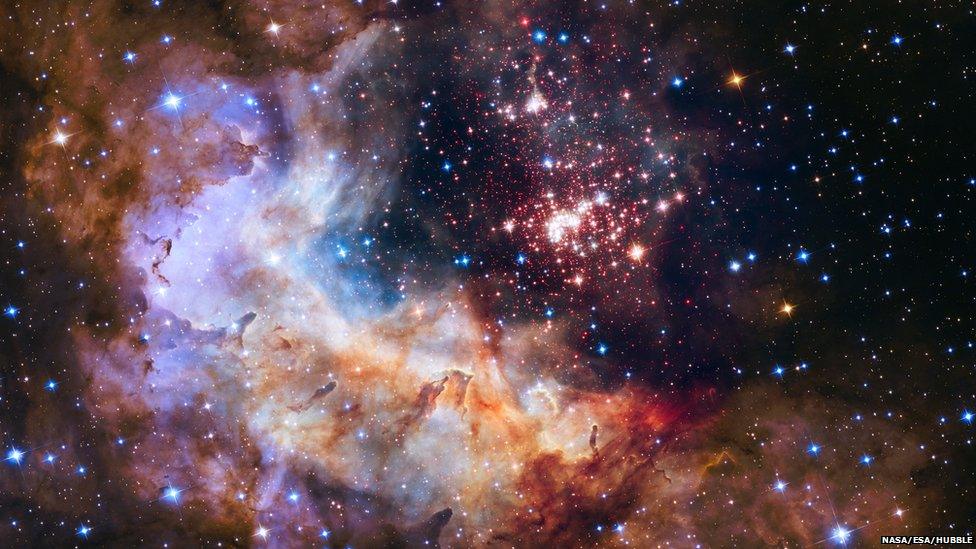Amazing things Hubble taught us
- Published

In its 25 years in orbit around the Earth, the Hubble has changed what we know about the Universe.
The Universe is 13.8 billion years old
This image helped astronomers work out the age of the Universe
Before the telescope launched, astronomers could only estimate that the Universe was somewhere between 10 billion years and 20 billion years old.
By measuring the brightness of stars millions of miles away, scientists were able to work out the age of the Universe with much greater accuracy.
They now think the Universe is 13.8 billion years old, give or take a few years.
The Universe contains billions of planets
Back in 1995 the Hubble Space Telescope studied a small area of the Universe which scientists thought was empty.
"We thought there was nothing in that space," space expert Dr Maggie Aderin-Pocock told Newsround.
"But when we developed the film, we realised that in that space were 3,000 galaxies."
"It means that in the whole of the Universe there are billions of galaxies, billions and billions of planets," she said.
A closer look shows each tiny speck is a whole galaxy, containing hundreds of stars and planets
Black holes really exist
Galaxy NGC 4526 has a supermassive black hole at its centre, with the mass of 450 million Suns
For hundreds of years, scientists had written theories about black holes.
A black hole is believed to be an object with a pull of gravity so strong that even light can't escape it.
Scientists couldn't test their theories about black holes until the Hubble Space Telescope was launched.
Hubble provided images clear enough to show that the pull of gravity did affect light, and we now know black holes exist.
That's not all...
Light takes millions of years to reach Hubble from the distant reaches of the Universe. That means the telescope can see back in time, and capture stars being born billions of years ago.
In 1994, Hubble saw a comet hit Jupiter. Watching the impact of the collision has helped scientists find out more about what happens when these space rocks hit planets.
The future of Hubble
In its 25 years of service, the Hubble Space Telescope has had to be repaired a few times.
Sending astronauts to fix Hubble is expensive and can be dangerous, and no more repair visits by astronauts are planned.
Eventually some of Hubble's important systems will fail and the telescope will no longer work.
Scientists are already working on the James Webb Space Telescope which will take over Hubble's amazing work.
The new telescope is expected to launch in 2018.
- Published24 April 2015
- Published24 April 2015
